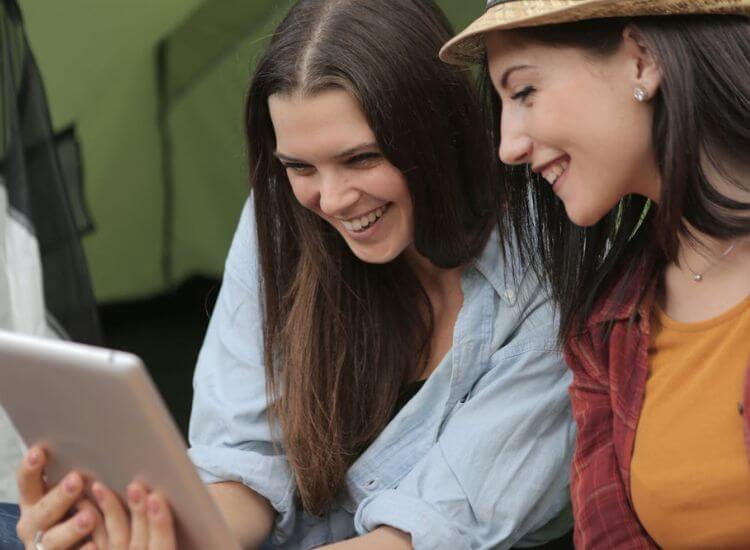



Viewers often make a split-second decision: watch or scroll. A video hook stops the scroll. It might be a sharp visual, a compelling question, or a striking statement that sparks curiosity. Learning how to make a compelling video hook gives you the power to start every video with impact.
An opening that resonates draws viewers into your story, making your content feel more purposeful. The strength of your hook video can shape the rest of your video’s success.
A video hook is the opening moment—those first few seconds—designed to draw in your audience. It functions like a headline for your video: concise, attention-grabbing, and evocative. The hook's importance cannot be overstated, as it sets the tone for the rest of the video. An engaging hook can significantly increase viewer retention, ensuring that your audience stays long enough to receive your message.
Hooks for videos can take many forms: a question, bold statement, surprising statistic, or a visual that demands attention. The key is making it clear what the viewer stands to gain by staying.
For instance, in a popular cooking video, the creator might start with a visually appealing shot of the final dish accompanied by the statement, "Want to make the best chocolate cake ever? Let's get started!" This immediately grabs attention and promises value.
Another example could be a fitness influencer beginning with a high-energy workout snippet followed by, "Ready to transform your body in 30 days? Watch this!" Such hooks are strategically designed to engage viewers from the get-go, ensuring they stay tuned for more.
A video hook captures attention at the very start and encourages viewers to keep watching. It works like a headline: brief, direct, and designed to spark interest. Understanding how to make a good video hook helps you create openings that set the tone, build curiosity, and improve audience retention.
Around 20% of viewers drop off within the first 10 seconds if they aren’t engaged (Gitnux, 2025). This shows how critical those first few moments are. A strong hook draws people in and signals that your content will deliver value.
Creators face constant competition for attention. A strong hook video makes an instant impression and signals that the content will deliver value. In just a few seconds, a clear and engaging hook can increase watch time and strengthen viewer connection.
Engagement begins at the first moment. Without a solid video hook, even excellent content may be skipped. In a crowded feed, attention is the prize, and the hook video is your first move.
A well-executed hook helps to:

Creating a strong video hook requires planning and awareness of your audience’s behavior. The goal is to capture interest quickly and lead viewers into the main content without hesitation. Here’s how to make a good video hook that connects and converts attention into engagement:
Every effective hook video starts with understanding your audience. Use analytics, surveys, and community feedback to discover what they care about most.
When you create from your audience’s perspective, your hooks naturally become more relevant and persuasive.
Different audiences respond to different types of hooks for videos.
Experiment with formats that complement your brand personality and message style.
Your hook should make it obvious what the viewer will gain by watching. In just a few seconds, communicate value or intrigue.
For example: “Here’s how to film professional-looking videos on your phone.”
Simple, clear, and direct. The promise of value keeps the viewer watching.
Movement and contrast can draw attention faster than words. Use quick zooms, bold text overlays, or visual shifts to break monotony. Even subtle camera motion or a sharp color change can make your video hook more dynamic and memorable.
The most effective hooks for videos are concise. Aim to hook your audience in under five seconds. Avoid long intros or brand splash screens—viewers often decide within moments if they’ll stay or skip. A short, impactful opening works better than an overproduced start.
No single formula works for every creator. Test multiple openings, track viewer retention data, and note which hooks perform best. Small tweaks, like changing the first line or visual cue, can lead to significant improvements in watch time. Over time, these experiments refine your sense of what your audience responds to.

Successful creators use various techniques to build powerful hooks for videos. Below are 10 effective hooks for videos you can apply to your content to capture attention and build engagement from the start.
Questions pull viewers into the conversation by tapping into their curiosity. When a question echoes their thoughts or challenges what they believe, they feel compelled to keep watching for the answer.
Examples:
A strong question makes the viewer think and sets the stage for discovery. Keep it short, relevant, and tied directly to the content that follows.
Statistics instantly capture attention because they bring credibility and an element of surprise. Facts that challenge assumptions create curiosity and motivate viewers to learn more.
Examples:
Always explain the relevance of the number you mention. A statistic without context is forgettable, but one that links to a clear insight or takeaway keeps viewers invested.
Opening with a confident or controversial statement can break through the noise and spark interest. It interrupts predictable content patterns, making the viewer stop and pay attention.
Examples:
A bold hook works best when it’s truthful and backed by proof in the video. It should challenge the viewer, not mislead them.
Hooks that promise a tangible benefit make viewers feel the video is worth their time. They stay to find out how the content delivers on that promise.
Examples:
Clarity is key. Avoid vague claims, instead, focus on what the viewer can realistically achieve after watching your video.
Visuals often hook faster than words. An unexpected image, quick movement, or powerful contrast can spark instant attention. This approach is especially effective in short-form content, where every frame counts.
Examples:
Dynamic visuals set the mood, create emotion, and make your video hook memorable before your message even begins.
Personal stories create emotional connection and authenticity. When you start with a brief, relatable experience, you humanize your message and build trust with the audience.
Examples:
Keep the story concise and relevant to your main topic so that it adds meaning, not distraction.
Challenges immediately engage viewers by involving them in the content. They invite participation and create anticipation for the result.
Examples:
A challenge encourages interaction and turns your viewers into active participants, which boosts retention and connection.
Urgency-driven hooks push viewers to act now rather than later. Time-sensitive language builds momentum and makes your content feel immediate.
Examples:
Urgency works best when it’s genuine, grounded in real timing, trends, or opportunities your audience can act on right away.
Humor captures attention through surprise and relatability. It lightens the tone, builds rapport, and makes your content feel approachable.
Examples:
Well-placed humor makes your message memorable, but it must align with your brand voice and your audience’s sense of fun.
Emotion-driven hooks resonate deeply because people remember how content makes them feel. Whether it’s excitement, empathy, or inspiration, emotion keeps viewers engaged beyond logic.
Examples:
A sincere emotional hook creates connection and trust, setting the stage for meaningful storytelling.
Each of these video hook examples helps you attract attention in different ways, through curiosity, emotion, or value. The key is alignment: match your hook to your message, your audience, and the emotion you want them to feel. A great hook video doesn’t just start strong; it gives viewers a reason to stay.

Incorporating user-generated content (UGC) at the beginning of your video can create an instant connection with your audience. UGC can include testimonials, reviews, or footage from your viewers or customers. For example, starting your video with a clip of a satisfied customer saying, "This product changed my life!" immediately builds trust and curiosity. It shows real-world applications and benefits, encouraging new viewers to continue watching.
Creating suspense or teasing a reveal can keep viewers on the edge of their seats. By hinting at something exciting or important that will be revealed later in the video, you can maintain interest and anticipation. For example, the phrase "Stay tuned to find out the secret ingredient in this recipe!" keeps viewers interested while they wait for the big reveal. This technique is especially effective in keeping viewers hooked throughout the entire video.
Using a countdown or timer at the beginning of your video can create a sense of anticipation and urgency. A short countdown, like "In 5 seconds, you'll discover how to..." builds excitement and keeps viewers watching to see what happens when the timer reaches zero. This technique works well for videos that promise quick tips, tutorials, or reveals.
Using text and captions can make your video accessible to a wider audience, including those who watch without sound. Start your video with bold, attention-grabbing text that summarizes the main point or benefit. For example, "Learn the 5 secrets to boosting your productivity!" This not only captures attention but also ensures that your message is clear even if viewers can't hear the audio. Captions can highlight key points and keep viewers engaged throughout the video.
Opening with a controversial opinion or setting up a debate can immediately capture attention. For instance, starting with "Is social media ruining our lives? Let's discuss!" challenges viewers' preconceptions and invites them to engage with your content to hear different perspectives.
Controversial hooks can spark curiosity and encourage viewers to watch the entire video to understand and form their own opinions on the topic.
Crafting an effective video hook is one of the most powerful ways to capture attention in a crowded content space. The first few seconds of your video set the tone for everything that follows, shaping how viewers engage with your message.
Strong hooks start with understanding your audience. Once you know their interests, frustrations, and motivations, you can design openings that speak directly to them. Use techniques like asking intriguing questions, sharing surprising statistics, making bold statements, or teasing a benefit that instantly sparks curiosity. Visual storytelling, short personal stories, and quick challenges also help sustain attention throughout your video.
Experimentation plays a key role in improving your hooks for videos. Try different formats, measure audience retention, and refine your approach based on real feedback. Every audience reacts differently, and consistent testing ensures that your openings grow stronger over time.
If you’re looking to grab the attention of your viewers from the very first line, practice your script and refine your delivery with a teleprompter. Sign up at Teleprompter.com to create smooth, confident, and captivating video hooks that keep audiences watching.
Short, attention-grabbing openings that spark curiosity and make viewers want to keep watching your video.
Start with a bold question, quick movement, or emotional line that connects instantly with viewers.
Keep it short, surprising, and emotionally charged while hinting at a valuable takeaway.
The best hooks for video content include questions, shocking facts, personal stories, or strong visuals that immediately capture interest.
Use a quick statement or relatable line that fits your niche and grabs attention within two seconds.
Aim for 3–5 seconds, just enough to grab interest before diving into your main content.



